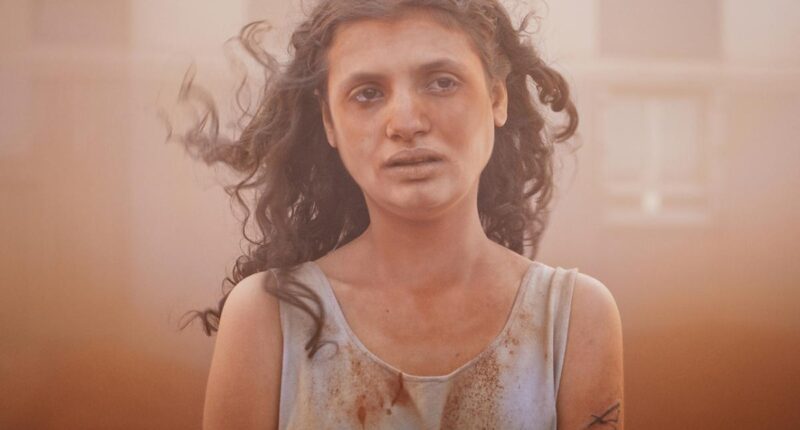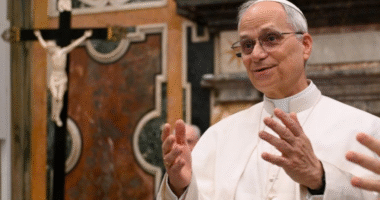The film Alpha, directed by Julia Ducournau, stands out not for its content, but for its peculiar choices in storytelling and visuals. The plot revolves around a mysterious illness, a controlling mother, and a vulnerable teenage girl, progressing in a clumsy manner. The use of an HIV metaphor is somewhat perplexing, along with attempts to address social issues that seem out of place. The movie’s heavy soundtrack emphasizes the cryptic drama and intricate symbolism, making it difficult to take seriously and arguably marking it as one of the weakest contenders at the 2025 Cannes Film Festival.
Alpha lacks the chilling or unsettling effect typical of Ducournau’s work, a sharp decline from her previous successes. Her debut film, Raw, though flawed in concept, managed to evoke visceral discomfort effectively. In contrast, Titane, her exploration of gender dysphoria through metal, earned her the prestigious Palme d’Or at Cannes. However, in Alpha, Ducournau’s fascination with transformation appears unfocused and somewhat misguided, despite the initial visually appealing scenes.
The movie begins with striking visuals, drawing parallels between geology and biology by comparing cracked earth to a human arm marked with bruises and needles. These intense close-up shots transition to a tenderly lit moment between Amin, a skeletal heroin addict played by Tahar Rahim, and his young niece Alpha, portrayed by Ambrine Trigo Ouaked. Alpha innocently finds beauty in her uncle’s struggles and innocently scribbles on his arm with a felt pen. Shortly after, the scene shifts to a stark contrast as the older Alpha (portrayed by Mélissa Boros) is seen unconscious at a party, where a classmate tattoos the letter “A” on her shoulder using a dirty needle.

Seeing metal and ink piercing skin up close yields a sickly jolt — it’s classic Ducournau — but from there on out, the director begins playing coy in ways that make Alpha feel self-congratulatory. Conversations with characters off screen, and sudden dream-like turns, begin portending twists that are only “surprising” in that you might not be able to expect them, but they do little to enhance or magnify the drama (or, really, help it focus). Alpha’s mother, played by Golshifteh Farahani, is a doctor who’s long been treating a mysterious disease transmitted by blood, the beginnings of which appear as flashbacks with the aforementioned warm lighting. Back in the more cool-toned, washed out present, she grows concerned for Alpha’s safety and soon gets her tested for the deadly virus with no cure, which makes her an outcast at school while she waits.
These distinctly AIDS-like fears and ostracization eventually give way to a matter-of-fact depiction of the film’s disease: the infected gradually turn into marble husks, practically becoming their own tombs. In theory, there’s a perverse beauty to this premise, but Ducournau seldom centers its conflicting, contradictory emotions with her humdrum depiction of its physical effects.
“Ducournau’s strengths tend to lie in engaging with challenging material, but her latest simply plants the seeds for difficult ideas, only to watch them perish from too great a distance to intervene.”
Alpha’s uncle Amin — still an addict, but promising to kick the habit — comes to live with her and her mother, giving the adolescent an outlet to discuss some of her feelings. She’s likewise a comfort to Amin in moments when the world at large can be cruel, but this mutual recognition of their plight quickly zips by, giving way to a story in which even its central disease simply ceases to matter. Before long, the film gets lost in complicated machinations about the relationship between its two timelines (whose color-coding is completely arbitrary, mind you), getting further and further away from its initial premise until it becomes unrecognizable.
The one minor positive to this pointless meandering is the amount of time (and the variety of different scenes) the movie manages to offer its performers. There’s not much cohesion to be found, but Boros delivers a bravely rankled, physically vulnerable performance, as a teenager in search of affection. Rahim contorts himself physically and emotionally, playing an addict desperately trying to fill a similar void. Farahani, meanwhile, tries to balance looming anxiety with utter exhaustion, until her character breaks under the pressure. However, the movie’s many hints at larger social fabrics — at the homophobia and sexism at the core of people’s fears, or the malformed subplot about the family’s North African roots and questions of assimilation — usually take the form of isolated scenes that, ironically, never blend in.
By the time Alpha lays its cards on the table, it reveals a truly mystifying storytelling approach in retrospect, one that can’t even be labelled an admirable failure. Where the film begins and where it ends up may as well be on different planets, and the space between them is seldom tread with the artistic deftness required to connect so many disparate ideas. The result is a work of heavy, flashy textures, but textures alone — and textures that never seem to fully justify their own existence. Ducournau’s strengths tend to lie in engaging with challenging material, but her latest simply plants the seeds for difficult ideas, only to watch them perish from too great a distance to intervene.
Siddhant Adlakha (@SiddhantAdlakha)is a New York-based film critic and video essay writer originally from Mumbai. He is a member of the New York Film Critics Circle, and his work has appeared in the New York Times, Variety. the Guardian, and New York Magazine.
(function(d, s, id) {
var js, fjs = d.getElementsByTagName(s)[0];
if (d.getElementById(id)) return;
js = d.createElement(s); js.id = id;
js.src = “//connect.facebook.net/en_US/sdk.js#xfbml=1&appId=823934954307605&version=v2.8”;
fjs.parentNode.insertBefore(js, fjs);
}(document, ‘script’, ‘facebook-jssdk’));

















